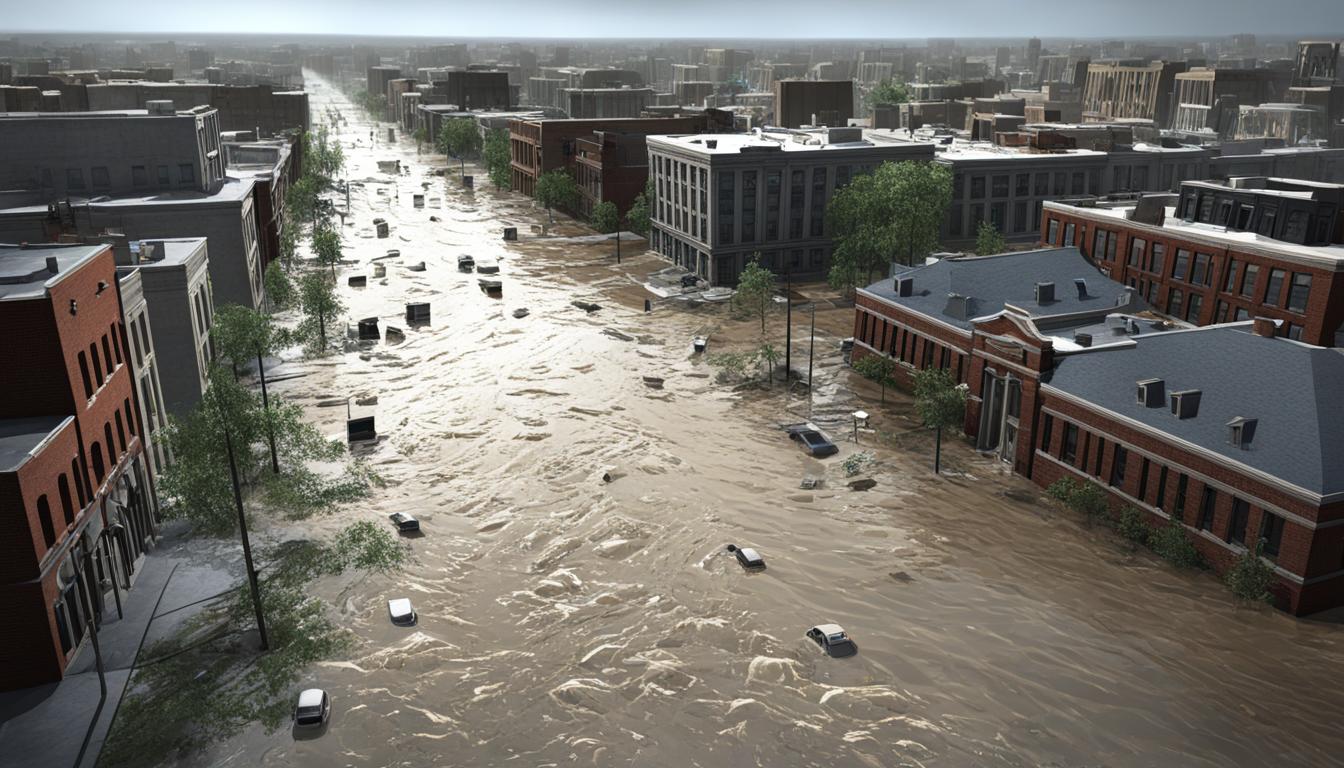Extreme weather events have a profound impact on economies worldwide, causing significant financial consequences and disrupting various sectors. From hurricanes and floods to droughts and wildfires, these events can ravage communities, infrastructure, and natural resources, leading to enormous economic setbacks.
The economic impact of extreme weather events extends beyond immediate damages and destruction. It affects businesses, supply chains, and productivity, leading to long-term consequences that require adaptation measures.
In this article, we will explore the various aspects of the economic impact of extreme weather events and shed light on the importance of understanding and mitigating these effects. We will delve into the costs associated with damages and destruction, examine the disruptions caused to business operations and productivity, and discuss the long-term economic consequences and the need for adaptation measures.
Join us as we delve into this crucial topic and gain insights into the far-reaching effects of extreme weather events on global and local economies.
The Cost of Damages and Destruction
Extreme weather events have far-reaching financial consequences, often resulting in substantial costs due to damages and destruction. These events wreak havoc on infrastructure, property, and natural resources, causing significant economic setbacks.
When extreme weather strikes, the cost of damages can skyrocket. Buildings and homes may be destroyed or heavily damaged, requiring costly repairs or even complete reconstruction. Critical infrastructure such as roads, bridges, and power lines may be compromised, leading to disrupted services and lengthy recovery processes.
Not only does the destruction of physical assets impose a financial burden, but it also impacts businesses and communities. Industries heavily reliant on stable weather conditions, such as agriculture and tourism, suffer losses due to damaged crops, decreased visitor numbers, and disrupted operations.
In addition, natural disasters can wreak havoc on the environment, resulting in the loss of valuable ecosystems and biodiversity. The destruction of forests, coastal habitats, and marine ecosystems not only diminishes the natural beauty of an area but also affects industries such as forestry and fisheries, causing long-term economic consequences.
Government entities and taxpayers must bear the brunt of these costs, often allocating significant financial resources to aid in recovery efforts. Insurance companies also face substantial payouts as they compensate policyholders for damages, further amplifying the economic strain caused by extreme weather events.
To mitigate the financial impact of damages and destruction, communities and businesses must prioritize disaster preparedness and resilience measures. Enhancing building codes, implementing early warning systems, and investing in sustainable infrastructure can help minimize future economic losses while safeguarding lives and livelihoods.
Stay tuned for the next section, where we will explore the disruption of business operations and productivity in the wake of extreme weather events.
Disruption of Business Operations and Productivity
Extreme weather events can have a significant impact on businesses, leading to a disruption of operations and a decline in productivity. When severe weather strikes, supply chains can be severely affected, making it difficult for businesses to source materials and deliver products or services on time.
Additionally, extreme weather events often result in reduced workforce availability as employees may struggle to commute to work or face personal challenges due to the aftermath of the event. This can further hinder a company’s ability to operate at its full capacity and meet customer demands.

Moreover, damaged infrastructure, such as power outages or inaccessible roads, can paralyze business activities, preventing companies from accessing their facilities or reaching customers. This not only leads to financial losses but also impacts the overall productivity of the affected industry and the local economy.
In some cases, businesses may need to halt operations temporarily or even permanently as they work to recover from the damages caused by extreme weather events. This can have long-term consequences, including the loss of jobs and a decrease in economic growth in the affected region.
To mitigate the disruption of business operations and maintain productivity during extreme weather events, companies are increasingly implementing resilience strategies. These strategies involve building stronger and more resilient infrastructure, developing contingency plans for supply chain disruptions, and adopting remote work policies to ensure business continuity even in adverse conditions.
Long-Term Economic Consequences and Adaptation Measures
The long-term economic consequences of extreme weather events can have a profound impact on societies and economies. As these events become more frequent and severe, it is crucial for communities and businesses to implement adaptation measures to mitigate their effects.
One significant economic consequence of extreme weather events is the increased insurance costs. Insurers are forced to raise premiums due to the rising risks associated with these events. This places a financial burden on individuals and businesses, reducing their disposable income and impeding economic growth.
In addition to increased insurance costs, extreme weather events can lead to changes in investment patterns. Investors become more cautious and hesitant to invest in regions prone to such events. This lack of investment can hinder economic development and make it difficult for communities to recover from the damages caused by these events.
To counteract the long-term economic consequences, adaptation measures are essential. Building resilient infrastructure that can withstand extreme weather events is crucial to ensure the continuity of business operations and the well-being of communities. Moreover, implementing sustainable practices, such as using renewable energy sources and adopting climate-friendly policies, can help mitigate the potential damages and reduce the overall economic impact.






